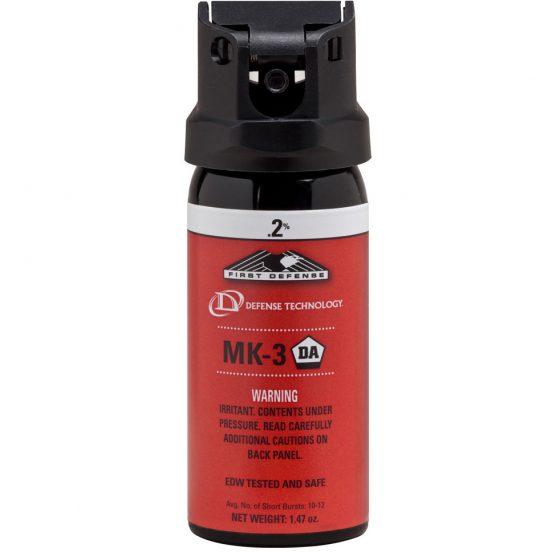Table of Contents
- Debating the Role of Pepper Spray in Emergency Medical Services
- Balancing Safety and Rights in Law Enforcement Pepper Spray Policies
- Detailed Insights on Health Implications and Tactical Use of Pepper Spray
- Recommendations for Standardized Training and Regulation in EMS and Policing
- The Conclusion
Debating the Role of Pepper Spray in Emergency Medical Services
In recent discussions about safety protocols within Emergency Medical Services (EMS), the potential use of pepper spray has sparked considerable debate. Proponents argue that pepper spray could serve as an essential self-defense tool for EMS personnel, who frequently face unpredictable and hostile environments. Its non-lethal nature allows for effective control of aggressive individuals without escalating to physical violence. Additionally, advocates highlight that pepper spray is easy to carry, quick to deploy, and can provide critical seconds for EMS workers to secure a scene and perform medical duties safely.
Conversely, critics caution against pepper spray’s introduction into EMS, emphasizing concerns about patient care and legal liabilities. They stress that exposure to chemical irritants could exacerbate medical conditions or provoke violent reactions, undermining the primary mission of healthcare providers. Concerns also focus on potential misuse or overreliance on force, which could strain the delicate balance between care and enforcement. Key points from opponents include:
- Risk of aggravating medical conditions such as respiratory distress or allergies.
- Complications in establishing trust between EMS personnel and vulnerable patients.
- Legal ramifications regarding use-of-force policies and patient rights.
Balancing Safety and Rights in Law Enforcement Pepper Spray Policies
Law enforcement agencies face a complex challenge in implementing pepper spray policies that uphold public safety while protecting individual rights. The use of this chemical agent must be meticulously regulated to avoid excessive force, with clear guidelines outlining when and how it should be deployed. Agencies are increasingly integrating de-escalation tactics and bias training to ensure that pepper spray is applied proportionately and only as a last resort, preserving the dignity and safety of all parties involved.
Balancing these concerns requires a nuanced approach that considers both legal frameworks and community expectations. Key factors under debate include:
- Transparency: Mandating detailed reporting and body camera footage review to monitor usage patterns.
- Accountability: Establishing independent oversight committees to investigate complaints of misuse.
- Training: Enhancing officer education on medical implications and vulnerable populations.
- Community Engagement: Soliciting input from diverse groups to refine policies that resonate with local values.
These strategies reflect a growing consensus that protecting public health and respecting civil liberties are not mutually exclusive, but rather essential components of effective law enforcement in today’s society.
Detailed Insights on Health Implications and Tactical Use of Pepper Spray
Pepper spray, primarily utilized as a non-lethal force alternative, has both immediate and residual health effects that demand thorough consideration in emergency medical services (EMS) and law enforcement settings. Upon deployment, it induces intense ocular and respiratory irritation, manifesting as temporary blindness, severe coughing, and difficulty breathing. While these effects are generally reversible within 30 to 45 minutes, vulnerable groups-including children, the elderly, and individuals with pre-existing respiratory conditions-may experience exacerbated reactions. Prolonged exposure or misuse can lead to complications such as chemical burns or respiratory distress, raising concerns about medical oversight and appropriate decontamination protocols following use.
From a tactical perspective, pepper spray remains a favored tool due to its rapid incapacitation properties and portability. Its effectiveness hinges on precision and timing, often employed to subdue aggressive or non-compliant subjects while minimizing physical confrontation. Key operational considerations include:
- Deployment range: Optimal at less than 10 feet to ensure accuracy.
- Environmental factors: Wind direction and enclosed spaces impact dispersion and collateral exposure.
- Legal and ethical boundaries: Usage must comply with jurisdictional guidelines and respect human rights.
Recommendations for Standardized Training and Regulation in EMS and Policing
Standardized training programs tailored for both EMS personnel and law enforcement officers are imperative to ensure the responsible application of pepper spray. Currently, disparities in the depth and scope of training contribute to inconsistent use and, at times, unnecessary escalations. Implementing a unified curriculum that encompasses de-escalation techniques, medical implications of chemical agents, and scenario-based practice would foster a deeper understanding of appropriate deployment. This approach can reduce misuse, minimize health risks to individuals, and promote accountability across agencies.
Alongside training, regulated oversight mechanisms must be established to monitor and evaluate pepper spray usage. Uniform policies detailing circumstances warranted for deployment, reporting protocols, and review procedures will enhance transparency and build public trust. Moreover, periodic retraining and certification renewal should be mandated to keep responders updated on best practices and evolving research. Coordinated efforts between EMS and law enforcement agencies to standardize these elements are essential for safeguarding both public safety and the rights of individuals encountered in the field.
The Conclusion
As discussions surrounding the use of pepper spray in emergency medical services and law enforcement continue, it remains clear that balancing officer safety, patient rights, and ethical considerations is essential. Ongoing dialogue among policymakers, frontline personnel, and community stakeholders will be crucial in shaping protocols that uphold public trust while ensuring effective and humane responses in the field. As this debate evolves, transparency and evidence-based approaches should guide future decisions on pepper spray deployment across these critical services.Check Our Other Blogs
- StunGun – Your Trusted Source for Stun Guns, Laws, and Self-Defense Tips
- PepperSprayLaws – Your Trusted Resource for Pepper Spray Information
- StunGunLaws – Your Trusted Guide to Stun Gun Legality and Safety




